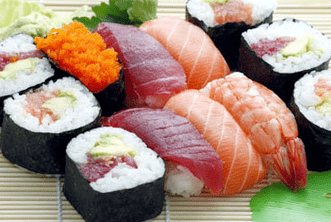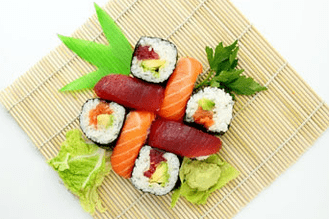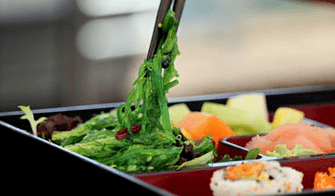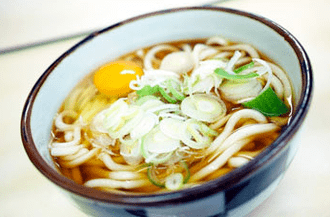The Japanese are still one of the worst people in the world.A look at their diet shows why this is how we can benefit from this.
If we want to lose weight, we often start with strict diets, which are then not executed in a few days or weeks for all strict rules.In fact, it is so simple: let's look at the worst people - in Japan.
There they treat food with respect and enjoy it.

Japanese diet
Travel to Japan.The choice of products
Manysquirrel: The main ingredients of the Japanese diet are fish, rice and vegetables.As well as soy and fruits.
Upon closer examination, this is like
- rich in protein,
- low -fat
- And the gluten -free diet.
- FishContains a lot of omega-3 fatty acids that are useful.
- VegetablesThey contain the necessary vitamins and fill the stomach well.
- Do not be afraid of carbohydrates: at first glance it seems that with the ubiquitous carbohydrate phobia that an incredible amount of white rice is eaten in Japan.Obviously, this is not very harmful to the Flaw Flae.RiceIt does not contain gluten and contains little fat.
- Soupand fermented milk products.That they hardly eat in Japan isdairy products.
- AlthoughcerealsSometimes they are used, for example, in the form of pasta, they are not the main food product.
- MeatThey eat much less than fish.
- But the Japanese likeEnzymed productsLike Miso or Kimchi.They contain probiotics that are useful for the intestines.This, in turn, plays a large role in losing weight.And one more thing that we can adopt from the Japanese: they eat a lot of soup even for breakfast.
Travel to Japan.Methods of cooking
In Japan, food is mainly steamed, stew or grilled.All these types of preparation are carried out almost without fat.
Of course, there is also fried food, for example, a popular tempo, but then it is used as a side dish only in small quantities.In Japan, the presentation and design of the dish is also important.Asian products are useful, tasty and contribute to weight loss.
In Japanese, to eat consciously
In Japan, food is considered an independent action on which you must concentrate.Food should be eaten slowly and consciously and enjoy it.Therefore, traditionally is not eaten “by the way” or “go”.That is, neither during a walk, nor in the subway, nor during work, nor when watching a TV.Of course, this is not prohibited, but, in fact, a diet, especially when losing weight, should be carried out consciously.With this method of absorption of food, a feeling of satiety is felt.Since working days and school days in Japan can be very long, it also means that there are longer breaks for food.AlsoportionsLess in Japan.You will not see a plate overloaded with food.

Weight comes with fast food
Slow Food (slow food)In Japan in trend.If you imitate this, you can lose weight deliberately, not starving.However, it should be noted that in Japan more and more appears from the West of new trends: fast food, for example.The previous habits in food disappear ...
This has consequences: the Japanese also recover when they say goodbye to their traditional food!Nevertheless, the country is also fighting quite tough with this, Japan in 2009 took decisive measures against the causes of overweight.Medical tests are regularly carried out in all municipalities and large companies.Companies should pay more for medical insurance if their employees have overweight or have high blood pressure, high blood lipids or increased blood sugar.In view of such measures, many Japanese prefer to return to Miso-Supa with fish instead of toasts in the morning.
How long does the Japanese diet last?
Time and possible weight loss can vary.The Japanese diet should be observed at least four weeks.This time is enough to stimulate fat burning.There are people who have lost from3to8A kilogram in four weeks with a diet.The result can be increased even more if you start a sports program.
- During the diet, many vegetables and fiber are used.The diet plan provides1200 caloriesper day.
- It is proposed mainly rice, fish and vegetables.
- Drinks: a lot of green tea and water.
- Take care of fresh cooking - no finished products.
- Take sports or train for endurance.
- Plan enough time for cooking.
Consult a doctor.- Any changes in the diet can lead to ailments.The reasons are mainly mental in nature and due to low calorie consumption.Consult a doctor if the symptoms are preserved.
Advantages of the Japanese diet
Japanese diet- This is a healthy mixed diet.Much attention is paid to fresh products and a balanced composition of dishes.
The disadvantages of the Japanese diet
- Low calorie consumption, this can cause a feeling of hunger and malaise.For people with overweight, the total calorie consumption can be even too low.
- Preparing fresh meals can be tedious in the long run for those who are used to eating fast food.
- Spontaneous visits to a cafe or restaurants with friends are confronted with a choice.
- Diet requires a lot of endurance.

But those who successfully finish the Japanese diet will be rewarded with more loss of excess weight.
If you want to see great successes, make a sports program.Be sure to consume enough protein.Otherwise, you cannot increase muscle mass.In the worst case, you will lose your muscles.Evil sports and other large loads should be avoided.
Japanese diet.Menu
All food should be fresh.The dishes are beautifully cooked, you can play with flowers.Food and enjoyment of food (slow absorption of food) are also very important.
Breakfast
- 1 tangerine
- 1 cup of Miso.This typical Japanese soup gives a lot of energy, but it is low fat.By the way, it consists of fish broth, tofu, algae, Miso (flavored soy paste) and green onions.The recipe below!
- 1 cup of green tea
Dinner
- 1 plate of land (raw fish with rice), with soy sauce
- cup of noodles with mushrooms
- 1 apple
- A cup of green tea
Dinner
- 1 portion of sashimi (a dish of other fish), soy sauce and Basabi (be careful, this paste made of water damn is very acute)
- 1 cup of whole grain rice
- 1 orange
- A cup of green tea
In addition, exercises are recommended (walking or riding a bicycle), as well as the pleasure of simple, small things.
And now about "good old times" - let's make a trip in time, in 1975
The Japanese are one of the most healthy people in the world with the largest long life expectancy, during which they remain harmful as a result of exemplary nutrition.Currently, Nippon.com has published a study in which it justifies the reasons for the good health of the Japanese with their nutrition.Nutritionists have studied the food habits of the Japanese for more than half a century.Result:In 1975, Japanese culinary habits were appreciated by the highest assessments.
Why was the 1975 Japanese diet was considered a model of diets
For many decades, Japanese culture has been influenced by the Western world, in particular, Western power habits spread in the country, and also brought with them such diseases as atherosclerosis and diabetes.The study in which the Japanese diet on mice was tested for several decades - in 2005, 1990, 1975 and 1960.
Result:The mice had the best state of health with a diet plan in Japan since 1975.This group of mice had the lowest risk of diabetes and a healthy liver.
Cause:The average Japanese diet plan contained a large share of vegetables, fruits, algae and seafood in this particular year.In addition, in 1975, the diet was predominated by various methods of fermented spices and a greater variety of herbs.In addition, the consumption of juices and sweet soft drinks at that time in Japan was not as common as today - both drinks are considered harmful to health in large quantities.
After the 48-week period, the researchers found that the mice, which were powered by the 1975 Japanese diet, were older and had a better memory than mice observing the 2005 diet.
But is it possible to convey these results to people?A study conducted by the Tokhoki University Studies Committee in Sendai, Japan, “Research Ethics Committe“ der Tōhoku UNI, SENDAI, proved that the 1975 diet has the same beneficial effect on people.And a group of participants who followed the 1975 diet during the 28-day period surpassed the indicators of those who followed the 2005 food plan.In the first group, cholesterol was lower, as well as the risk of diabetes.In combination with one -hour training three times a week, the 1975 diet also reduced stress and increased endurance in the group of participants aged 20 to 30 years.In general, nutrition in the Japanese style can also help reduce the level of lipids in the blood and visceral fat, which is considered harmful to health due to its metabolic activity.
Summing up, we can say thatPower of Japanese 1975Compared to modern nutrition in Japan - and typical for the West, food habits today are more useful in many respects.This healthier lifestyle and nutrition reduces the risk of diabetes, cholesterol in the long run, reduces blood lipids and visceral fat, weight loss is a positive side effect.

The 1975 diet, along with regular physical exercises, contributes to weight loss.
- Diversity:Daily menu usually consist of many small different dishes that are served with soup and rice - instead of one large main dish.
- Preparation:The most popular three types of dishes that were prepared in 1975 were boiled, steamed or raw, also grilled.Freedom heat and roasting were used less often.This form of preparation has a consequence of the fact that the most important nutritional values are lost in the heat.For example, oily fish, such as cod, contains important omega-3 fatty acids.After the frying, the fish contains only one third of the initial fat compared to raw fish, such as sashim.
- Ingredients:The 1975 diet is especially rich in soy products, seafood, tubers and green and yellow vegetables (including rnicons), fruits, algae, mushrooms and green tea.Eggs, dairy products and meat were also consumed in 1975, but only in moderate quantities.
- Spices:Instead of salt and sugar for taste, soy sauce, vinegar and sake, fermented spices and fish broth are used.
Soup Miso- This is a Japanese national dish, quickly preparing and very aromatic.The main recipe contains very few ingredients - you can enrich it as you wish.Miso-Sup is often eaten for breakfast in Japan, but also as a snack or side dish.With filling, the soup becomes the main dish.
As a basis for a soup, you will need only two ingredients:
Mizopasta:This spicy paste consists of soybeans and - depending on the variety - of various cereals, such as rice or barley.The ingredients are salted and fermented in barrels with the help of the so -called mold of Coji.There are light and dark, sweet and sharp Miso pastes.Thus, the choice of variety has a great effect on the taste of Miso soup.Mizopasta is considered very useful because it contains probiotic lactic bacteria formed during fermentation.Dasha:The Japanese fish broth is prepared from seaweed combat combat and dried bonito flakes (type of mackerel or tuna: “Katsuo-Bushi”-“Katsuo-Busi”).If you want to cook Miso vegetarian soup, you can use dried shiitaka and, possibly, mushrooms of Maitaka or Enoki instead of Bonito flakes.
Miso soup: basic recipe
For four small portions of Miso soup, you will need the following ingredients:
- 750 milliliters of Dasha
- about two or three tablespoons of Miso-Pasta
Use the Miso-Poste of your choice: in addition to soy, Shiro-Miso also contains rice and has a rather soft and sweet taste.The darker varieties of Miso, such as Genmai or Hatcho Miso, are more spicy.
How to cook Miso soup
-
Heat Dasha’s broth - but not cook.
-
Skip the Miso-pass through the sieve and mix well with the broth.Firstly, use only part of the quantity, since Paste Miso has a very salty taste.Try soup, and then add more to Miso pastes, if necessary.
-
Add the ingredients of your choice in a Mis-SUP in a few minutes before serving.Serve the finished soup in bowls.By the way, in Japan, the soup is eaten with sticks for food, and then the broth is drunk from the cup.
MISO soup recipe: additives and seasonings
For your soup, you can prepare different ingredients.In Japan, much attention is paid to the fact that the ingredients are cut evenly - so the finished soup looks very beautiful.Here are a few examples to enrich your soup Miso:
- Cooked rice or paste (for example, noodles of buckwheat dogs)
- Tofu sliced by cubes
- Onions or green onions, cut into thin rings
- Mushrooms, finely chop
- Kohlrabi, finely chop
- Snow sections
- Leaf spinach, Park Choi or Mangold
- Fried vegetables such as broccoli, pepper or carrots

Although Miso’s soup is very sharp in itself, it can be seasoned with several spices.For example:
- soy sauce
- A little like lime
- Japanese Wostershire sauce
- a few drops of sesame oil
- A little powder of ginger and / or chili pepper.
- You can also cut fresh ginger and / or pepper into thin slices and leave in a soup.
Advice:For many ingredients, you will have to go to an Asian store, but in regional markets you can buy fresh onions, mushrooms, kohlrabi and co.
Tofu and other soy products are now also produced in other countries.
Japaneseeat:
- rice, fish (raw and cooked), vegetables, all and algae
- Small portions
- various foods (up to 30 different per day)
- For breakfast soup, fish, rice, vegetables
- Fresh seasonal raw products
almost do not eat desserts do not eat bread
Drink mainly green tea
Do not fried in oil, use only a little vegetable oil for frying
they go a lot and go on a bicycle
Top three products
Rice/fish (algae)/soy (tofu)
Drink: Green tea
And another secret from Japanese
Want to become thinner in the waist of 12 cm?- If so, do the following respiratory exercise!
Important!
- Perform daily!
- Perform before breakfast!
- Never hurry!
- Foots put each other at a convenient distance.The knees, of course, "look" forward.
- Move the weight of the body to the hind leg, straighten the front.
- Inhale for 3 seconds.
- Exhale for 7 seconds.Relax muscles.Rip your hands.
Exercise perform at the beginning of 3 minutes, then increase the time to 10 minutes.













































































